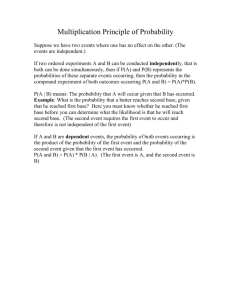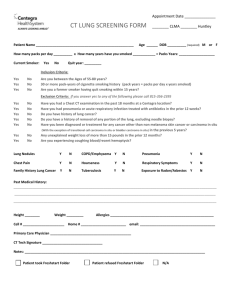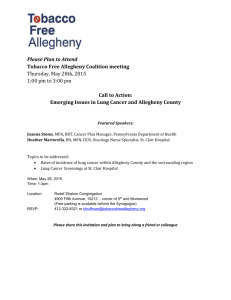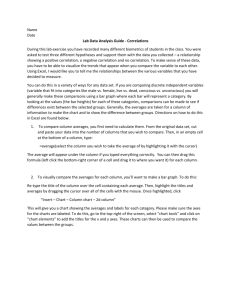explaining relative risk - Auckland Mathematical Association
advertisement
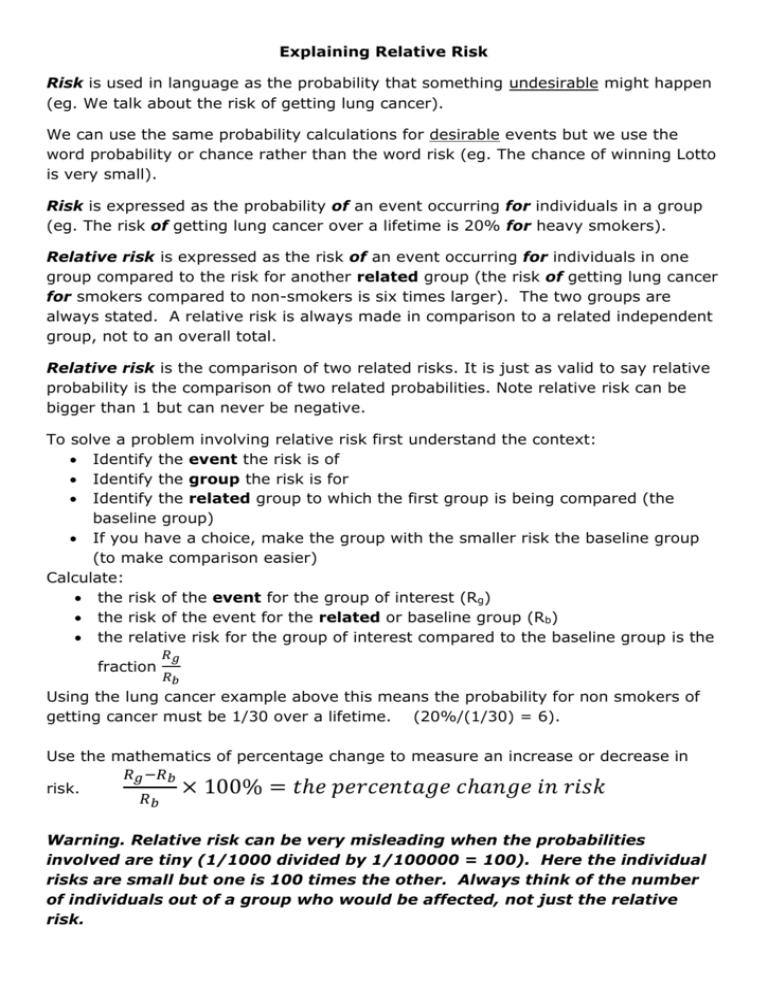
Explaining Relative Risk Risk is used in language as the probability that something undesirable might happen (eg. We talk about the risk of getting lung cancer). We can use the same probability calculations for desirable events but we use the word probability or chance rather than the word risk (eg. The chance of winning Lotto is very small). Risk is expressed as the probability of an event occurring for individuals in a group (eg. The risk of getting lung cancer over a lifetime is 20% for heavy smokers). Relative risk is expressed as the risk of an event occurring for individuals in one group compared to the risk for another related group (the risk of getting lung cancer for smokers compared to non-smokers is six times larger). The two groups are always stated. A relative risk is always made in comparison to a related independent group, not to an overall total. Relative risk is the comparison of two related risks. It is just as valid to say relative probability is the comparison of two related probabilities. Note relative risk can be bigger than 1 but can never be negative. To solve a problem involving relative risk first understand the context: Identify the event the risk is of Identify the group the risk is for Identify the related group to which the first group is being compared (the baseline group) If you have a choice, make the group with the smaller risk the baseline group (to make comparison easier) Calculate: the risk of the event for the group of interest (Rg) the risk of the event for the related or baseline group (Rb) the relative risk for the group of interest compared to the baseline group is the 𝑅𝑔 fraction 𝑅𝑏 Using the lung cancer example above this means the probability for non smokers of getting cancer must be 1/30 over a lifetime. (20%/(1/30) = 6). Use the mathematics of percentage change to measure an increase or decrease in risk. 𝑅𝑔 −𝑅𝑏 𝑅𝑏 × 100% = 𝑡ℎ𝑒 𝑝𝑒𝑟𝑐𝑒𝑛𝑡𝑎𝑔𝑒 𝑐ℎ𝑎𝑛𝑔𝑒 𝑖𝑛 𝑟𝑖𝑠𝑘 Warning. Relative risk can be very misleading when the probabilities involved are tiny (1/1000 divided by 1/100000 = 100). Here the individual risks are small but one is 100 times the other. Always think of the number of individuals out of a group who would be affected, not just the relative risk.





